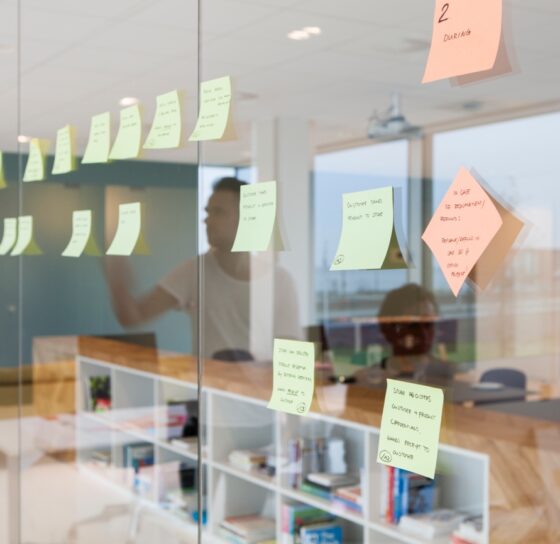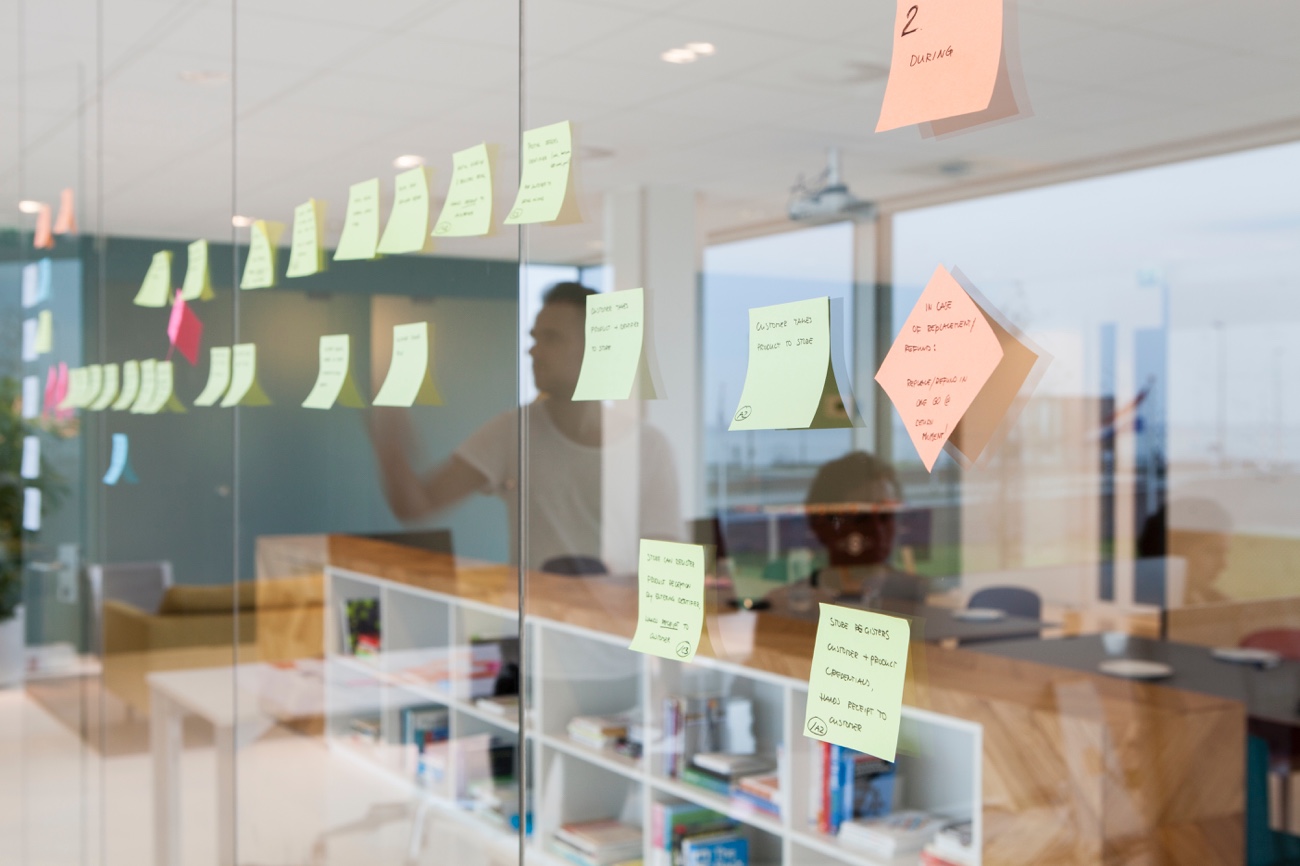As a result of the product-to-service transition and the increasing focus on customer experience and customer-oriented working, the playing field of service design is expanding. In this article I summarize the 5 most important new applications of service design and show how the impact of the field as a whole is increasing.
1. Operational processes
Many companies are making the transition from a product-driven to a service-driven organization. Such a transition is often accompanied by a new business model – take an organization that from now on will earn its money by leasing instead of selling its products. This requires a completely new way of thinking and turns existing internal operational processes upside down. In the new situation, for example, a new payment system is required, there will be more customer contact, the delivery time must be drastically reduced and much more flexibility is expected from employees.
As a result of these developments, service design is no longer just about optimizing customer interaction – the efficiency measures for the internal organization of the service are actually a natural part of it. That is service design at its core: designing and setting up the entire service ‘beyond’ the digital channels. Without these operational changes, there is little chance that a service transition will be truly successful and that the customer promise cannot be fulfilled.
2. The ‘Employee experience’: proud efficient employees
The same applies to the internal working method of our own employees. An organization that takes charge of its total customer experience often quickly notices that the existing working method does not suit it. Working from a customer journey is only really effective if there is collaboration across organizational silos. For example, through ‘journey teams’, in which people from different disciplines work together across departments and channels. Due to the growing impact of service design, agencies such as Essense are increasingly being asked for advice on setting up the internal organization. We also assist in the implementation of the translation of customer needs into digital design by keeping a sharp eye on the total customer experience.
“Working from a customer journey is only really effective if there is collaboration across organizational silos.”
This shift from external to internal is also reflected in the way organizations view their own employees: the employee experience. How do our employees experience working at our company? What does an employee need to do his job optimally? Does our own working method and culture actually match the customer experience that we aim for? Essense is currently involved by several clients for such ’employee lifecycle’ processes. This ranges from the application procedures, the first day and the familiarization to working hours, even exit and alumni experience. These things all have an impact on attracting and retaining employees – which is of course increasingly important in the current ‘war for talent’. Our Essense Academy offers the Optimizing Employee Experience training, entirely devoted to offering employees a distinctive CX.
3. Think critically about technology
At a time when groundbreaking technologies are being thrown at us, many organizations are asking questions. Should we do something with blockchain? Are we missing the boat with AI? What do we do with voice interaction? The danger of such a starting point is that technology becomes leading, while it should be ‘only’ an ‘enabler’ for your service. A service design application helps to take a critical look at such a new technology. The ultimate goal is to serve your customer as well as possible.
We help by placing service at the center of such an analysis, which assesses the potential of a technology as an enabler in the context of the service that people envision. Organizations that have a clear vision about this customer proposition and design can say with confidence that a technology will or will not help them move forward. Organizations without a customer vision are more likely to feel insecurity or even fear of missing out.
4. Service design in the complete ecosysteem
Organizations are increasingly working together with partners to provide good services to customers – a development that has been going on for a few years now. For example, an energy company cannot bring a solar energy proposition to the world on its own. In order to offer this service properly, it must collaborate with other parties, such as a solar panel supplier. A waste processor with a circular ambition also has to deal with parties in an entire chain. The interesting thing is: especially companies that think completely from the customer’s perspective are more aware of the fact that they can no longer do it alone. However, this means that when designing the optimal customer journey, you should take into account other parties in the ‘ecosystem’.
Service design is no longer just about the organization’s own channels, but just as much about the channels of all partners and the cooperation that is required for this. By mapping this out and putting the customer first, the shared interests and dependencies quickly become visible. This is a good starting point for cooperation.
“Especially companies that think completely from the customer’s perspective are more aware of the fact that they can no longer do it alone.”
5. Solve societal challenges
The above points already make it clear that the awareness, application and impact of service design within organizations is increasing. However, that impact goes much further than customer interest and company interest. We are also seeing an increasing demand for solving social problems and we also notice this in the customers who work with us, such as municipalities, government institutions and healthcare organizations. In such projects we do not help a client to increase turnover and customer experience, but we have to deal with completely different objectives. Think of behavioral change in people to stimulate the reduction and separation of waste, the effectiveness of youth care or cost reduction by introducing efficiency improvements at a social institution.
Projects like these are not only very challenging, they also show what our field is capable of – even making the world a better place. That is close to our purpose and therefore gives us enormous satisfaction.
In the coming weeks, I will, together with my colleagues at Essense, further explore these new service design applications in a series of blogs, based on specific projects at our customers.











